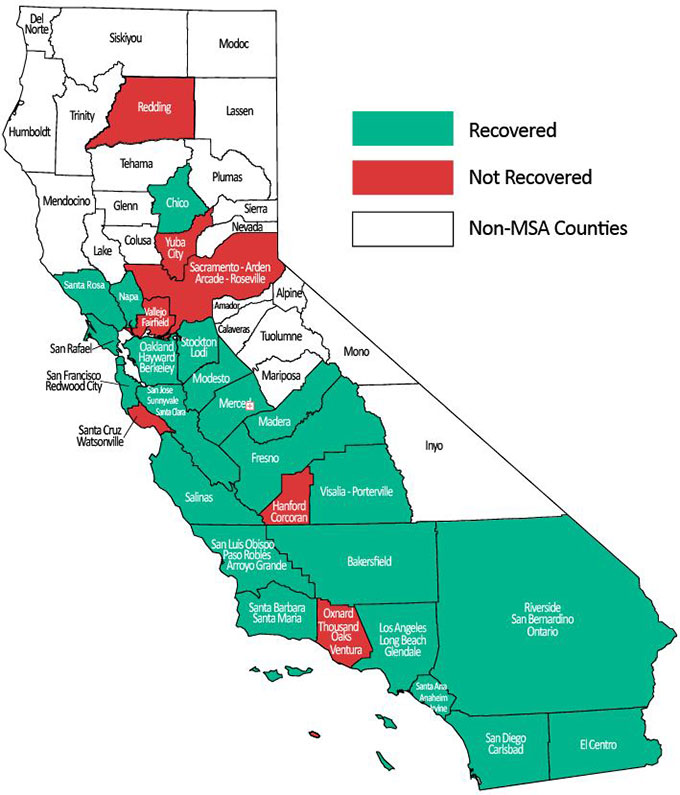
Vol. 1, No. 5, Published September 9, 2015
California Job Tracker: Stockton-Lodi Region Regains Jobs Lost During Recession
By Lynn Reaser
California has greeted another member into its recovery club: Stockton-Lodi.
A total of 22 out of 29 California�s metropolitan areas have now totally recovered all of the jobs lost during the Recession and exceeded their prior employment peaks reached before the Recession, according to the latest data for July 2015. (See Figure 20.) These 22 metropolitan statistical areas (MSAs), or their metropolitan district (MD) counterparts, represent 90 percent of California�s non-rural base. (See Figure 21.)
Nonfarm employment in California as a whole is now nearly 700,000 jobs above the prior peak reached eight years ago in July 2007. Of the seven MSAs still waiting to fully recover, Sacramento is the largest. However, if that area�s job growth continues at the pace achieved during the past 12 months, it too will be a member of the recovery group before the end of the year.
Figure 20: 22 of California�s 29 Metro Areas Have Recovered Recession Job Losses (As of July 2015)

Sources: California Employment Development Department, Labor Market Information; Fermanian Business and Economic Institute
Figure 21: Job Recovery by the Numbers (As of July 2015)
(Nonfarm Employment, Seasonally Adjusted)

*Numbers for the San Francisco-Redwood City-South San Francisco Metropolitan District and San Rafael Metropolitan District are not seasonally adjusted.
Sources: U.S. Bureau of Labor Statistics, California Employment Development Department, Fermanian Business and Economic Institute
See raw data: Employment numbers by region.
Lynn Reaser is chief of the Treasurer’s Council of Economic Advisors and chief economist at the Fermanian Business and Economic Institute for Point Loma Nazarene University. The opinions in this article are presented in the spirit of spurring discussion and reflect those of the author and not necessarily the Treasurer, his office or the State of California.